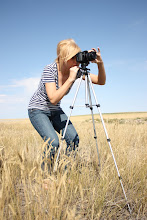Achieving a great exposure is much easier with digital cameras than it used to be with a traditional film camera.
On a digital camera, a photographer is able to adjust the shutter speed, aperture, and ISO to create the perfect exposure for what they are trying to shoot.
Another great thing about digital cameras is that there is a setting on your cameras that allows your display to entail a histogram letting you know the levels of the photo and what you may need to improve on for better exposure.
Evaluative/Matrix metering is much better than average metering and should be set as default on your camera. Spot metering focuses on a central spot that represents about "6 percent of the picture area." Center-weighted metering, however, gives about 75% to the center of the photograph.
There are automatic settings on your camera that allow you to simply turn to that setting and the camera will do either the shutter speed, aperture,or ISO for you. However, I prefer to use only the manual setting so that I can have full control over my camera.
Higher shutter speeds are made to capture motion. Lower shutter speeds are used for low-light settings and while shooting objects that are not moving, or holding still. The lower aperture, f stop, that you have, the more light is going through into your lens, and therefore the higher aperture or f stop, the less light coming in through your camera. Having a low f-stop also focus on one small object or area and blurs out the background and surrounding image. Lower ISO images give you a better quality image and a higher ISO helps in low-light situations, but you sacrifice higher quality photos.
You can use different techniques while shooting white and light scenes, such as increasing the exposure by a stop or two to create more vivid light in the photograph and really capture those lighter tones. The same goes with darker areas, only instead of increasing the exposure, decrease by a stop or two.
Subscribe to:
Post Comments (Atom)

No comments:
Post a Comment